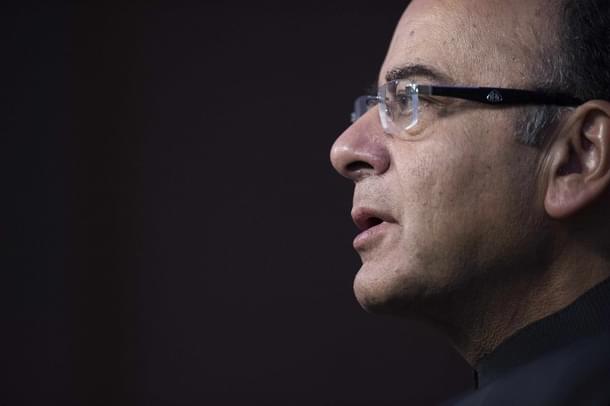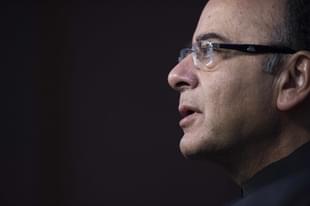Economy
The Green Shoots Are There; They Need Nurturing
Seetha
Dec 01, 2015, 11:50 AM | Updated Feb 19, 2016, 04:33 PM IST
Save & read from anywhere!
Bookmark stories for easy access on any device or the Swarajya app.


Will the government need to revise the economic growth target for 2015-16 down from the 8.1-8.5 per cent range that the Economic Survey had predicted?
That’s the question that immediately springs up as economic performance data for the first half (H1) of this fiscal come in. Gross domestic product (GDP) grew 7.2 per cent, lower than the 7.5 per cent in H1 of 2014-15. The growth in gross value added (GVA) at basic prices, also at 7.2 per cent, too was lower than the 7.9 per cent notched in H1 of the last fiscal. The sectoral GVA picture also doesn’t seem very rosy. Barring two sectors – mining and quarrying and trade, hotel, transport, communication – which did marginally better in H1 this year over last year, all the other sectors lagged.
That will mean a lot of catching up to do in the next two quarters.
Though there seems to be a very slight uptick in consumer demand (private consumption expenditure was 60.7 per cent of GDP in H1 this fiscal against 59.7 per cent in H1 of the last fiscal), investment activity still appears subdued – gross fixed capital formation fell from 29 per cent of GDP in H1 last fiscal to 28.1 per cent in H1 this fiscal.
Also released today were figures on the performance of eight core industries. Those, too, did not present a very happy picture. In the April-October 2015 period, they posted a combined growth of 2.5 per cent, much lower than the 5.6 per cent growth in April-October 2014. One would have expected the cement and steel sectors to have done very well, given this government’s infrastructure push but the cement sector grew only 2.6 per cent in April-October against 8.2 per cent last year, while steel actually registered a decline of 0.5 per cent during the same period against a growth of 7.6 per cent last year.
The only bright sign appeared to come from public finance figures for the April-October period, which shows that the government is certainly managing its purse better. Both the fiscal deficit and revenue deficits as a percentage of the budget targets (74 per cent and 72.9 per cent respectively) were much lower than last year (89.6 per cent and 98.5 per cent). Yes, total expenditure is up 57.5 per cent of budget target against 53.6 per cent last year, but there’s been a clear improvement in the quality of expenditure. The share of capital expenditure continues at 14 per cent against 1 per cent last year.
The H1 growth figures appear disappointing, but when one starts plotting quarter on quarter progress, then it does appear that the economy is turning the corner, though the second quarter (Q2) performance in 2015-16 still lags behind that of 2014-15 in many respects.
Though the Q2 GDP growth of 7.4 per cent is much lower than the 8.4 per cent logged in Q2 last year, it is a significant step up from the 7 per cent growth of Q1. It’s the same story in GVA growth as well – though Q2 growth of 7.4 per cent is much lower than the 8.4 per cent logged in Q2 last year, there’s been a steady climb back from Q3 (October-December) of last year when growth plunged to 6.8 per cent and further to 6.1 per cent in Q4.
Agriculture has sprung a surprise, with most analysts expecting it to do poorly given the monsoon deficit. But after a decline in Q3 and Q4 (January-March), the sector has moved up in both Q1 (1.9 per cent) and Q2 (2.2 per cent) this fiscal. The sector could do better in the near future as, according to India Ratings, the total area sown under kharif crops between April and October, at 103.88 million hectares was higher than the 102.66 million hectares last year. But agriculture needs a lot of focussed attention to build on this.
There are some worrying signs. Growth in the construction sector has been fluctuating quarter on quarter and this has implications for employment (since it is the first stop for people moving out of agriculture) and also has implications for other sectors like steel and cement. Manufacturing GVA may have grown 9.3 per cent in Q2 of this fiscal but it has been fluctuating quarter on quarter since Q1 (April-June) of 2014-15 and a close watch will need to be kept on it.
Private consumer demand as well as investment activity too are fluctuating quarter on quarter and, as a percentage of GDP, both are lower than they were in Q1 of 2014-15.
In the last days of the United Progressive Alliance (UPA) government, whenever the finance minister P. Chidambaram or chairman of the Prime Minister’s Economic Advisory Council, C. Rangarajan, pointed to green shoots of recovery, the next set of economic data would prove them wrong.
The same story could get repeated if the government does not carefully nurture the green shoots that have appeared. The economy needs big bang reforms as well as attention being paid to minor issues and irritants. The government needs to concentrate on both. The economy has to be its sole agenda.
Seetha is a senior journalist and author





